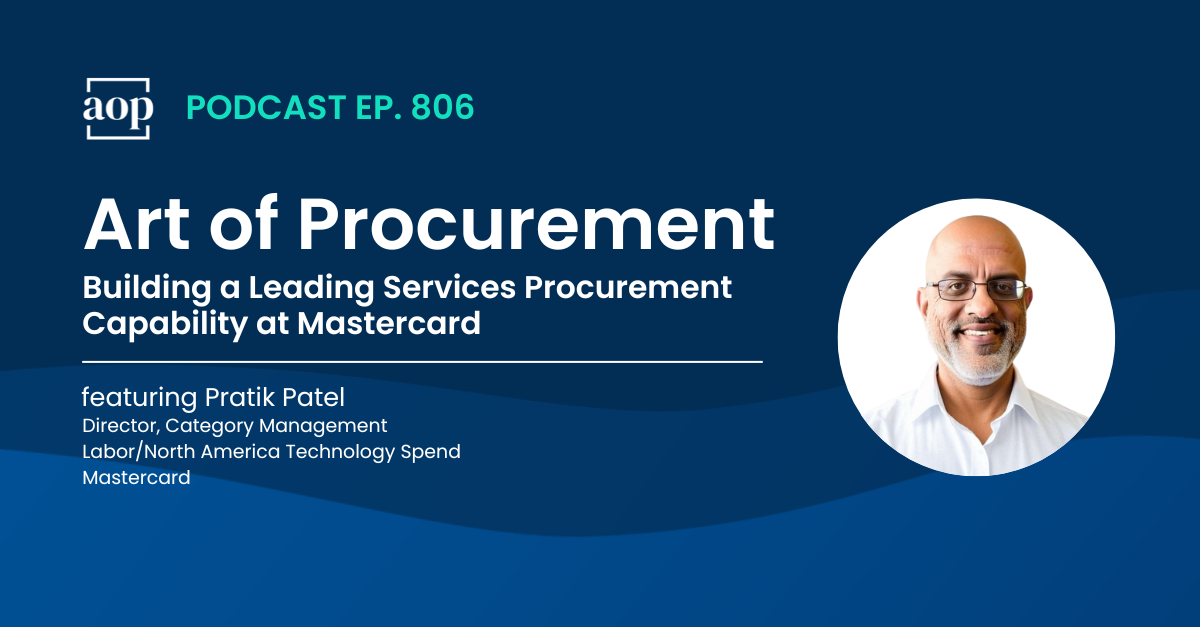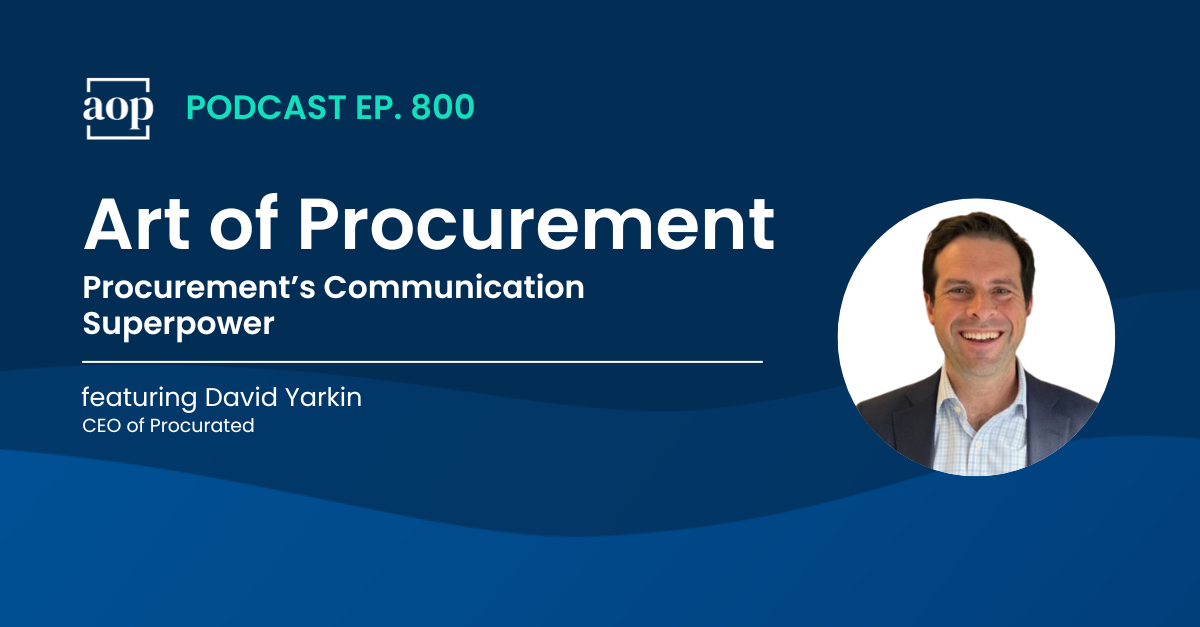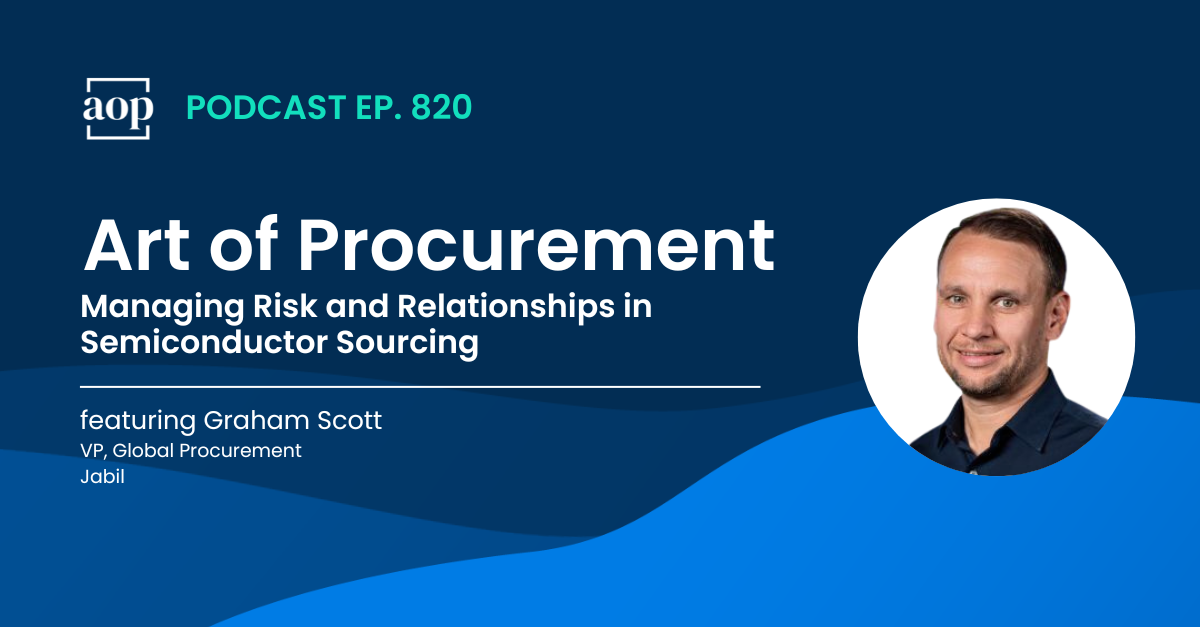.png)
“I look at building a business case in terms of storytelling, and the story that you have to be able to tell in procurement is around better, faster, and cheaper.”
– Pratik Patel, Director - Category Management - Labor/North America Technology Spend, Mastercard
Inefficiency and waste are silent value killers.
Building a business case for procurement – whether you’re establishing the function for the first time or lobbying for more investment and support – requires some self-reflection about procurement’s role and value. It hinges on procurement’s ability to tell the rest of the business a ‘story’ in a way that’s compelling and aligned with what the business cares about.
In this podcast episode, I talked with Pratik Patel, Director - Category Management - Labor/North America Technology Spend at Mastercard, about how procurement can build a strong business case for more investment, influence, and strategic decision making power.
According to Pratik, identifying and eliminating waste is one of the most important ways to do this.
In our talk, he laid out what he calls the “D.O.W.N.T.I.M.E.” framework, a systematic process procurement can follow to eliminate waste by analyzing and optimizing their workflows.
Here, in Pratik’s own words, is a closer look at each component of “D.O.W.N.T.I.M.E.” and how they help procurement create a lean, waste-conscious culture that understands the difference between value-added and non-value-added activities, ultimately strengthening their position in the business.
Defects: Identifying Contract Variations
"What's a defect in a contract? To me, it's a red line, because it's away from the standard work. In lean, we always talk about standard work. It's like standard operating procedures, or standard instructions that you have. Your standard instruction is your legal template that you’ve established as a company, and when there is a red line. That’s a defect.
“When you understand the intent of why you have the defect, when that red line occurs, you can try to alleviate that defect by making the other party at least have an appreciation for your intent. Then, you can get them to agree that, while we can’t change the intent, maybe we can change the wording so that they’re more comfortable with it.”
Overproduction: Beyond Unnecessary Reporting
"In services, overproduction, the biggest example that I can think about is reports. The reports that we generate need to be able to drive value. It's something that our customers are ultimately willing to pay for. It's not just because they're pretty charts that just show the current state of where we're at, and we don't take any action around it."
Waiting: Minimizing Handoff Delays
"When you think about waiting, I think about this in terms of, if I have to go and hand it off to someone else, now I'm waiting for their review and approval as well. Where I have become a subject matter expert, I tell my suppliers always, ‘okay, here's the template. Go ahead and take a look at it. If you have any comments or questions, I'm happy to get on a call with you to go over any of your comments and questions. But, recognize that you, as a supplier, have to accept risks that we cannot control.’ So, I set that expectation up first, and I try to minimize that risk of waiting."
Non-Utilized People: Maximizing Team Potential
"We have to ensure that we position people in this process for success. So, people's skills, abilities, knowledge that they're effectively utilized. And so, part of this has to deal with education. You have to educate teams on how to look at contract language. What are those areas that are most important? You want to have standards and you need to know what the most important standards are and how you get there as fast as possible to be able to alleviate it."
Transportation: Reducing Unnecessary Handoffs
"Transportation is like unnecessary movement. So, if you think about that in services, it's the multiple handoffs and the approvals that need to take place. It might require an executive to approve as well. Do we really want to go there and is the executive really going to approve that?"
Inventory: Managing Workload and Visibility
"Inventory is like multitasking, unbalanced workloads. I also look at it in terms of lack of visibility on a pipeline. Address everything up front. Let's not have ad hoc components like, 'oh yeah, I'll take that back.' No, let's review everything. Let's make sure we align on what level of risk we are willing to accept.
“We should know what inventory we had in the past when it comes to the execution of contracts and what level of precedents and compromises we can accept and try to align with that up front as a worst case scenario with that supplier so that, again, we minimize the red lines."
Motion: Eliminating Unnecessary Activities
"Motion is work you're doing, but it's not producing a value-added activity. You're just going through the motions. You're just doing it because it's always been done this way, and you're going to continue doing it. Employees are not working to a standard method of operation. We should be very systematic in how "
Excess Processing: Focusing on Value-Added Activities
"You want to focus on value-added activities. So if you have version control issues, multiple signatures that are required, why do you need that? Or unused or unnecessary information that we're collecting. Think about all that additional waste that exists when we need to be able to work in the spirit of a partnership."
Making D.O.W.N.T.I.M.E. Real for Stakeholders
Creating value isn’t just additive. It also, and perhaps even most often, means removing problems and pain points. When procurement identifies and eliminates waste, especially through scoping, negotiations, and contracts, they’re telling stakeholders and the business that they are tuned in to their concerns. By making these concerns a shared priority that procurement solves through a framework like D.O.W.N.T.I.M.E., they’re demonstrating their value to the business and building a strong foundation for further investment in the function.
Subscribe to Art of Procurement
Apple | Stitcher | iHeart Radio | Email
Links & Resources
- Pratik Patel on LinkedIn
- Subscribe to This Week in Procurement
- Subscribe to Art of Procurement on YouTube




